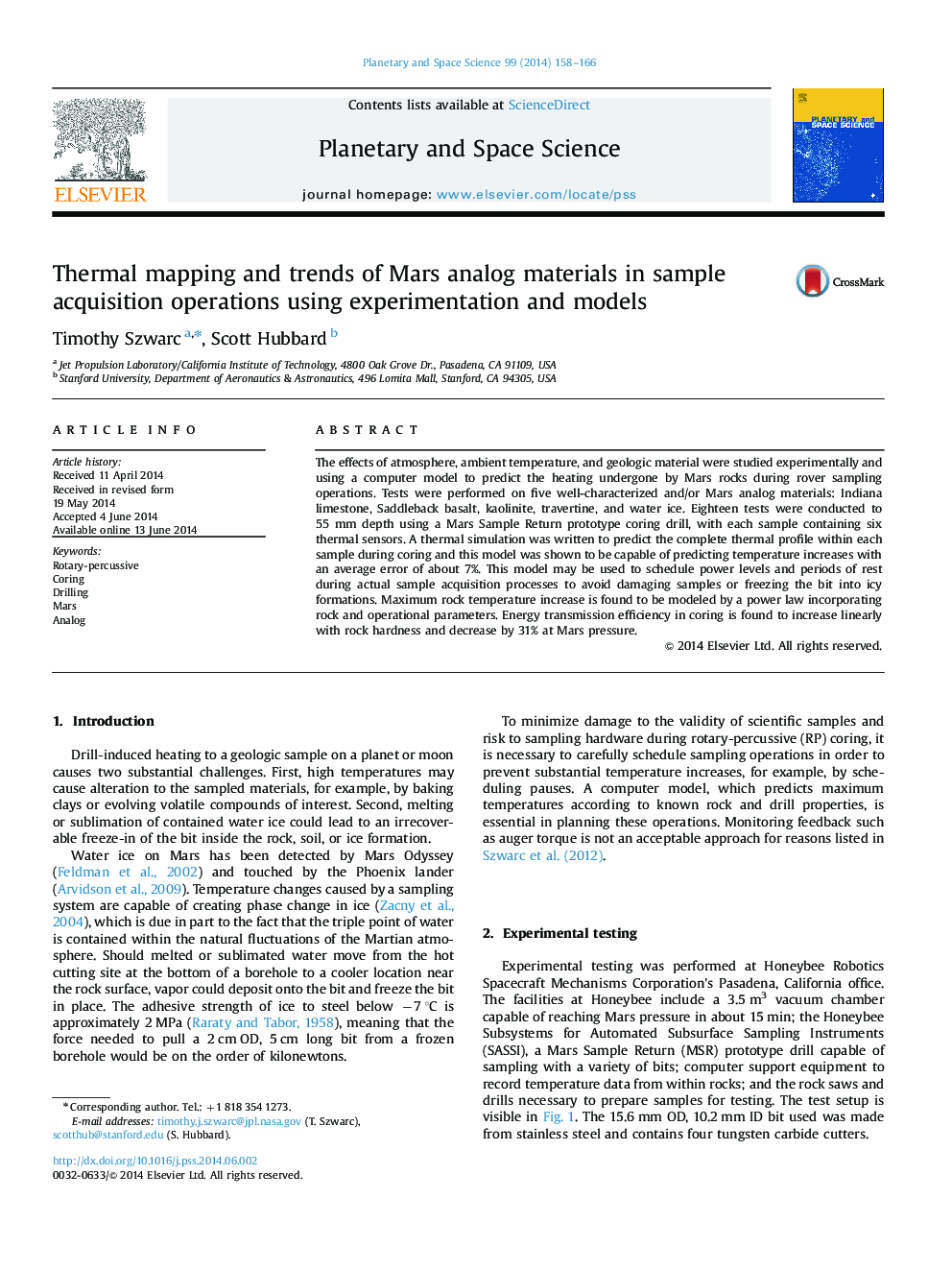| Article ID | Journal | Published Year | Pages | File Type |
|---|---|---|---|---|
| 8143718 | Planetary and Space Science | 2014 | 9 Pages |
Abstract
The effects of atmosphere, ambient temperature, and geologic material were studied experimentally and using a computer model to predict the heating undergone by Mars rocks during rover sampling operations. Tests were performed on five well-characterized and/or Mars analog materials: Indiana limestone, Saddleback basalt, kaolinite, travertine, and water ice. Eighteen tests were conducted to 55 mm depth using a Mars Sample Return prototype coring drill, with each sample containing six thermal sensors. A thermal simulation was written to predict the complete thermal profile within each sample during coring and this model was shown to be capable of predicting temperature increases with an average error of about 7%. This model may be used to schedule power levels and periods of rest during actual sample acquisition processes to avoid damaging samples or freezing the bit into icy formations. Maximum rock temperature increase is found to be modeled by a power law incorporating rock and operational parameters. Energy transmission efficiency in coring is found to increase linearly with rock hardness and decrease by 31% at Mars pressure.
Related Topics
Physical Sciences and Engineering
Earth and Planetary Sciences
Geophysics
Authors
Timothy Szwarc, Scott Hubbard,
